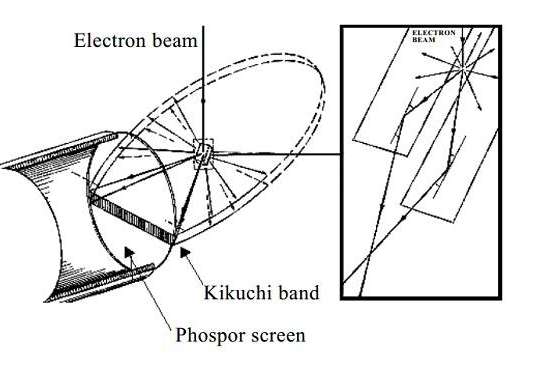Flame retardant materials include organic flame retardant materials and inorganic flame retardant materials, the current flame retardant material is added after the flame retardant material can achieve the flame retardant effect. In general, various types of flame retardants, sub-organic flame retardant and inorganic flame retardant, flame retardant organic flame retardant effect is good, less additives. However, organic flame retardants have the drawbacks of large amount of smoke and toxic gases released during combustion. Inorganic materials are non-toxic, smoke-free, non-volatile and inexpensive, but there are a large number of additives. The more common flame retardants are aluminum hydroxide and magnesium hydroxide flame retardants. Inorganic flame retardants can be used as additives to add plastic or rubber to achieve the effect of fire. For example, in wires, car tires or transport bags, so as to effectively protect traffic safety and electricity safety. In addition, it can be added to a variety of paints and coatings, thus contributing to the material with flame retardant properties.1. Overview of flame retardantsFlame retardant polymer propellant, the use of flame retardant polymer materials can be flame-retardant treatment, in order to avoid burning of materials and to prevent the spread of fire, and promote the synthesis of materials with smoke, self-extinguishing and flame retardant . As China’s synthetic materials are widely used in many related industries such as construction industry, textile industry, transportation industry, aerospace industry and flame retardants play an increasingly important role in these industries, the continuous development and progress of modern science and technology, as well as various Countries attach great importance to safety work, therefore, prompting people on the flame retardant safety and fire performance requirements are also getting higher and higher. Increasing variety of flame retardants and production gradually increased. Currently, 70% of the world’s flame retardants are used to make flame retardant materials and 20% are used as rubbers. 5% make textiles, 3% make paints, and 2% make wood and paper.2. Development of flame retardant materials analysisIn recent years, with the increase of plastic products and the improvement of safety standards, flame retardant materials are more widely used. In general, flame retardant materials can be divided into organic flame retardant materials and inorganic flame retardant materials. Among them, the organic flame retardant materials are mainly halogen additives, inorganic materials not only have a certain flame retardant effect, but also produce hydrogen chloride and prevent smoking. In addition, inorganic flame retardant materials are non-toxic, non-corrosive and inexpensive. In the United States, Japan and other countries, the consumption of inorganic flame retardant materials exceeds 60%. However, the consumption of inorganic flame retardant materials in China is less than 10%.2.1 Halogen-based flame retardantHalogen-based flame retardants not only the largest output, but also the most widely used. The material to which the flame retardant is added releases hydrogen halide during combustion and gains free radicals, thereby preventing the transfer of the combustion chain, thereby creating a less active free-radical combustion. Halogen flame retardants are generally used in thermoplastic materials and thermosetting materials, not only flame retardant effect, and less impact on the flame retardant products. In addition, it is not only compatible with polymer materials, but also easy to use. Therefore, it is welcomed by the market. Halogen flame retardant materials are widely used and play an increasingly important role in automobile, packaging and textile industries.2.2 phosphorus flame retardantInorganic phosphorus-based flame retardants include phosphate, red phosphorus, etc. The red phosphorus is widely used. Red phosphorus is a good flame retardant. It not only has the advantages of smoking inhibition and high efficiency, but also has the characteristics of non-toxicity. However, in practice, red phosphorus flame retardant materials are easily oxidized and release harmful toxic gases, in addition to dust easily lead to explosion in the resin mixing and molding process there is a certain risk, therefore, phosphorus flame retardant materials Subject to certain restrictions on use. Red phosphorus flame retardant is improved by adding metal hydroxide, to a certain extent, solve the problem of toxicity of polymer materials.2.3 magnesium flame retardantMagnesium hydroxide is an additive type inorganic flame retardant. Compared with other flame retardants, magnesium hydroxide has a good smoke suppressing effect on the source of raw materials, preparation process and waste treatment. In general, in the event of a fire, about 80% or more of the fire is due to smoke suffocation, so the current flame retardant smoke suppression is more important than the flame retardant. Generally magnesium hydroxide decomposition energy and heat capacity is relatively high, compared to the usual inorganic flame retardant, magnesium flame retardant synthetic materials can withstand higher temperatures, not only can improve the extrusion speed, but also can greatly reduce the molding practice. In addition, effectively improve the flame retardant efficiency. At the same time, magnesium hydroxide and other related flame retardants have good compounding ability. Magnesium hydroxide flame retardant has been widely used in the plastics and rubber industries. The future market potential is great, but the price is higher than other flame retardants.2.4 aluminum flame retardantIn general, aluminum hydroxide is an early inorganic flame retardant, and is also a large amount of application, the current aluminum hydroxide accounted for more than 80% of the total amount of inorganic flame retardants, is widely used in elastomers, rubber, paint And plastic products, with smoke, flame retardant, filling function, and can synergistic effect with other substances, low cost, non-volatile and non-toxic non-corrosive, aluminum hydroxide flame retardant principle is added to the polymer which aluminum hydroxide . Thus reducing the concentration of the polymer. When the temperature reaches 250 ° C, heat absorption and dehydration begin to occur, so that the temperature rise of the polymer can be suppressed. Aluminum hydroxide flame retardant materials can generate steam in the combustion process of combustible gases and oxygen dilution, thereby preventing the combustion continued. However, aluminum hydroxide flame retardants also have some drawbacks. For example, the flame retardant effect of aluminum hydroxide is enhanced with the increase of additives. However, if the filler is too much, the strength of the product is reduced. In addition, aluminum hydroxide heat absorption although large, but the decomposition temperature is low, can only be applied to the processing temperature of the polymer.3 flame retardant material development trend3.1 halogen-free flame retardantHalogen flame retardant materials, high flame retardant efficiency and less dosage, become the mainstream products on the market, however, the disadvantage of halogen flame retardants is the production of corrosive and toxic gases, resulting in short circuits or other metal objects corrosion. In addition, causing air pollution, have a serious impact on the human respiratory tract. In recent years, the United Kingdom, Norway and Australia have issued a series of decrees to test the combustion toxicity of certain plastic products. Therefore, the development of halogen-free flame retardants has gradually become a worldwide trend. Inorganic flame retardants are abundant in origin and lower in price, but their flame retardant effect is poor and the additives are too much. Red phosphorus flame retardant high efficiency, less dosage, in many industries have been very widely used, but the stability of red phosphorus flame retardants need to be further strengthened, red phosphorus has easy to explode and easy to color weaknesses. Intumescent flame retardants in the combustion process less smoke and no release of toxic gases, therefore, should intensify research on intumescent flame retardants. China’s Beijing Institute of Technology, University of Science and Technology of China, Anhui Institute of Chemistry and Shanghai Fire Protection University to expand the research on flame retardant, is expected to develop new products to market.3.2 reduce harmful gasesAccording to relevant statistics, most of the causes of death in fires are caused by the toxic gases released from the burning products. It is a key research topic in the field of flame retardancy to study new type of flame retardants and to reduce the toxic gases and the amount of smoke burned by materials. At present, the main smoke suppressants include transition metal oxides, metal oxides, magnesium-zinc compounds, tin oxide, ferrocene, copper oxide and so on. The main products are the American company’s zinc borate series, molybdate series Wait. Among them, some of the inorganic filler has both flame retardant and smoke suppression effect. In addition, intumescent flame retardant porous carbon layer also has smoke suppression and flame retardant. Through the study of new flame retardants to improve the material’s high temperature resistance and fire resistance, on the one hand to reduce the harmful gases on the human respiratory tract hazards, on the other hand to inhibit the spread of fire to avoid greater losses.4 ConclusionIn summary, this paper mainly on the current development status and trends of flame retardant materials are analyzed, of which, more types of flame retardants, including inorganic flame retardants and organic flame retardants, for the current polymer materials and products Safety standards should be improved so that the flame-retardant materials should be promoted to be non-flammable or non-toxic during combustion, to avoid environmental pollution and cause respiratory problems. There are various kinds of flame retardants, including halogen-based flame retardants and phosphorus-based flame retardants Future trends in fuels include halogen-free trends and trends to reduce harmful gases.
Kaynak: Meeyou Karbür


